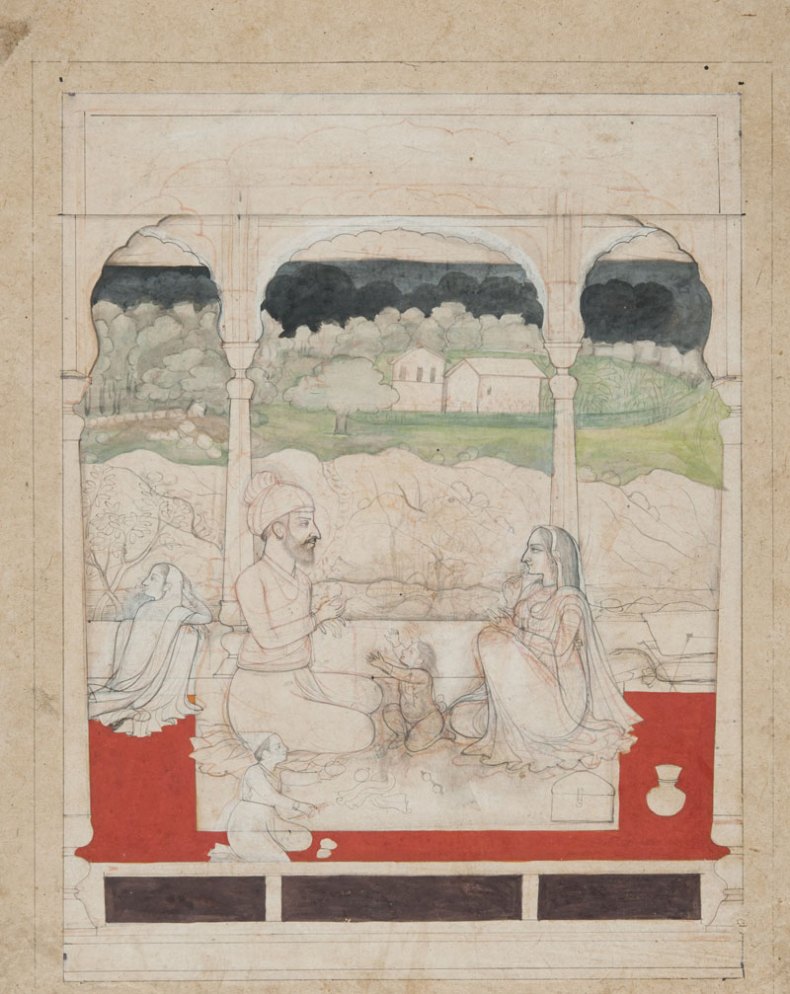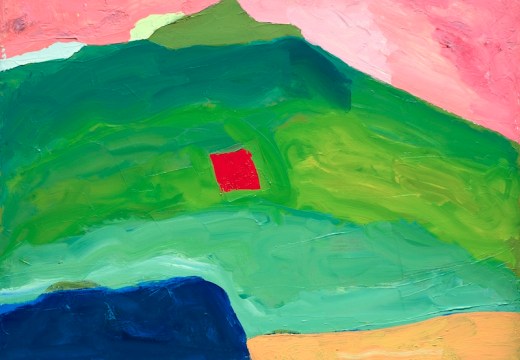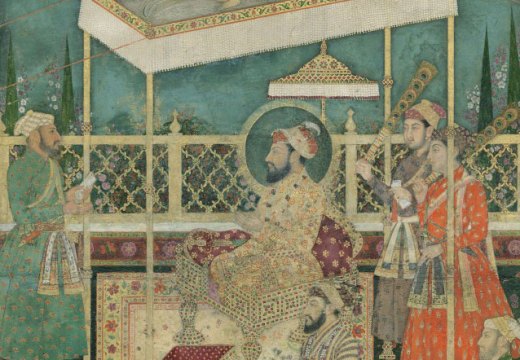How do collectors choose where to give their art? After all, it is a big decision to emotionally and physically let go after decades of painstaking gathering and nurturing.
When I asked Conley Harris, a longtime Boston resident, why he and his partner Howard Truelove gave their fine collection of 65 Indian drawings to the Philadelphia Museum of Art (PMA), this was his reply: ‘We knew it would get a great show. There is a big commitment to Indian art there. They have eight permanent galleries devoted to Indian art.’ They liked the way the PMA reaches out to locals, art historians and artists, too. Harris also mentioned how disappointing it is that their local Boston Museum of Fine Arts has such a great Indian collection, but less than one gallery in which to display it.

A Nobleman and His Family in a Pavilion (c. 1790), India (Guler, Punjab Hills, Himachal Pradesh)
The PMA has done them proud with their current exhibition, ‘Drawn from Courtly India’. Curator Ainsley M. Cameron has given the drawings a seductive, beautifully lit display in the PMA’s Perelman Building. She has researched and written the substantial catalogue, making the case for the important place of drawings in Indian art, and evoking William Blake’s claim that drawing and painting are of equal stature. Furthermore, the PMA commissioned local Philadelphia artist Christian Cantiello to create an entrance mural inspired by the historic exhibits; and the final gallery gives visitors the opportunity to try their own hand at drawing. Both collectors drew regularly themselves, which informed their buying. ‘We definitely went for drawings where we could sense the artist, the hand, behind the drawing.’
Two other India shows fill neighbouring galleries at the PMA. ‘Picture This: Contemporary Photography and India’ shows the work of four strong photographers including Magnum-nominated Max Pinckers, whose staged romantic scenes mix perceptive observation with Bollywood glitz. The exquisite, abstract and disarmingly contemporary textiles in ‘Art of the Zo’ were made in the barely accessible regions of the north-eastern Himalayas that are now variously within India, Bangladesh and Myanmar (Burma), where weaving is central to the culture. Textiles are another PMA strength, which perhaps accounts for David W. and Barbara G. Fraser loaning some of these rare pieces, which they have gathered on their adventures to the region.
In all, this trio of exhibitions forms a deft stop-gap while the PMA’s Indian galleries undergo renovation, to reopen this autumn. It is their way of telling visitors: don’t forget about our lofty hall from a South Indian temple in Madurai, or our magnificent Alvin O. Bellak collection of miniature paintings, and much more.
Elsewhere in this congenial and art-filled city there are other winter shows to seek out. A highlight is at the magnificent Pennsylvania Academy of the Fine Arts (PAFA), where the African-American artist Norman Lewis (1909–1979) has been given a much-deserved retrospective. In the early 1940s the artist switched from Social Realism to an Abstract Expressionist cocktail of fantasy, mysticism and powerful colour, creating some ravishing canvases. He was the first African-American artist to win the Carnegie International Popular Prize, for his painting Migrating Birds (1954). Then, in the 1960s, he opted back into realism as a means of criticising racism in the American South, through paintings such as American Totem (1960) and Redneck Birth (1961). Don’t miss the exhibition of his lithographs and etchings in a nearby room.
‘Drawn from Courtly India’ is at the Philadelphia Museum of Art until 27 March 2016; ‘Picture This: Contemporary Photography and India’ is open until 3 April; and ‘Art of the Zo’ is on until 20 March.
‘Procession: The Art of Norman Lewis’ is at the Pennsylvania Academy of the Fine Arts (PAFA) until 3 April.














![Masterpiece [Re]discovery 2022. Photo: Ben Fisher Photography, courtesy of Masterpiece London](http://zephr.apollo-magazine.com/wp-content/uploads/2022/07/MPL2022_4263.jpg)
‘Like landscape, his objects seem to breathe’: Gordon Baldwin (1932–2025)